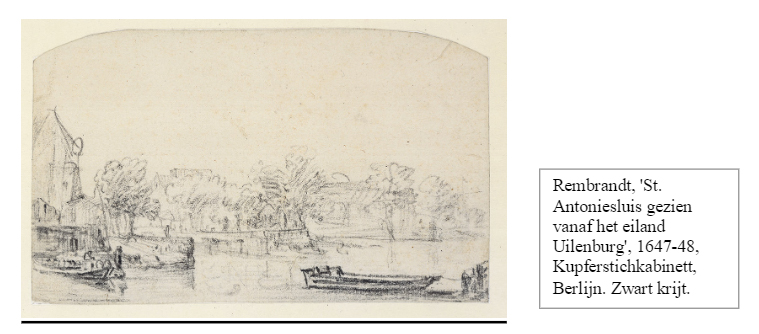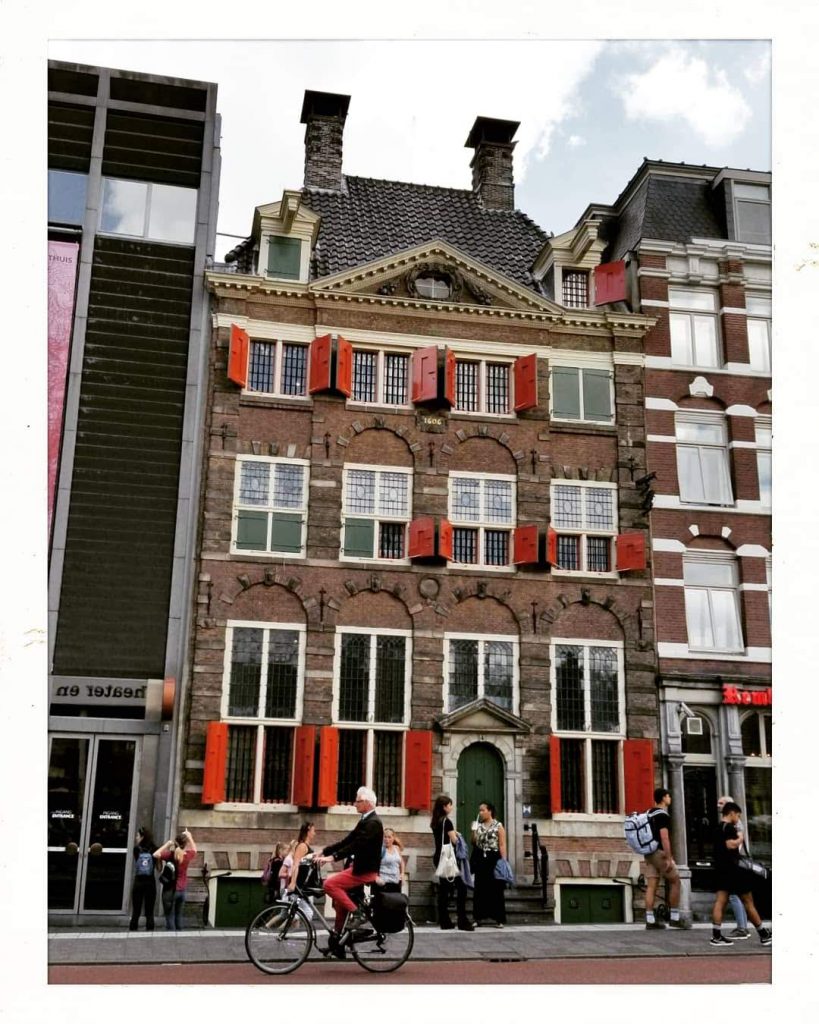
We visited the former home and studio of the painter Rembrandt, located in the Nieuwmarkt district of Amsterdam. Rembrandt lived and worked in the home between 1639 and 1658. The house remains intact and has been refurnished with period furniture using a detailed inventory from the time.
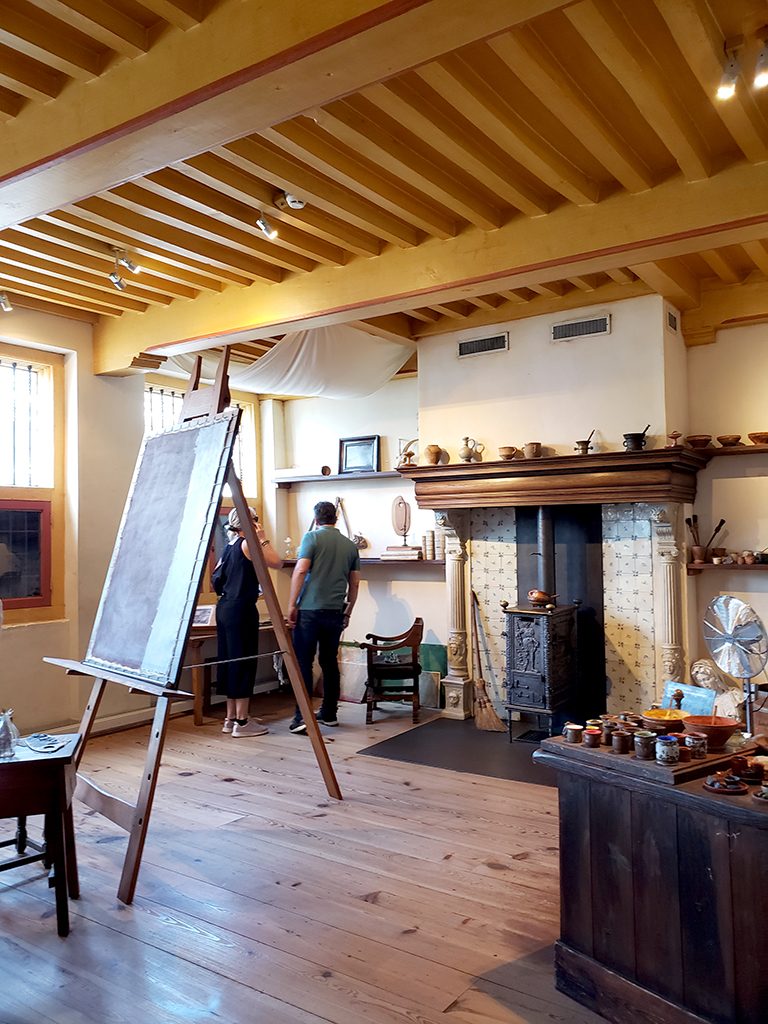
The aptly named Large Studio is the biggest room in the house and is where Rembrandt painted.
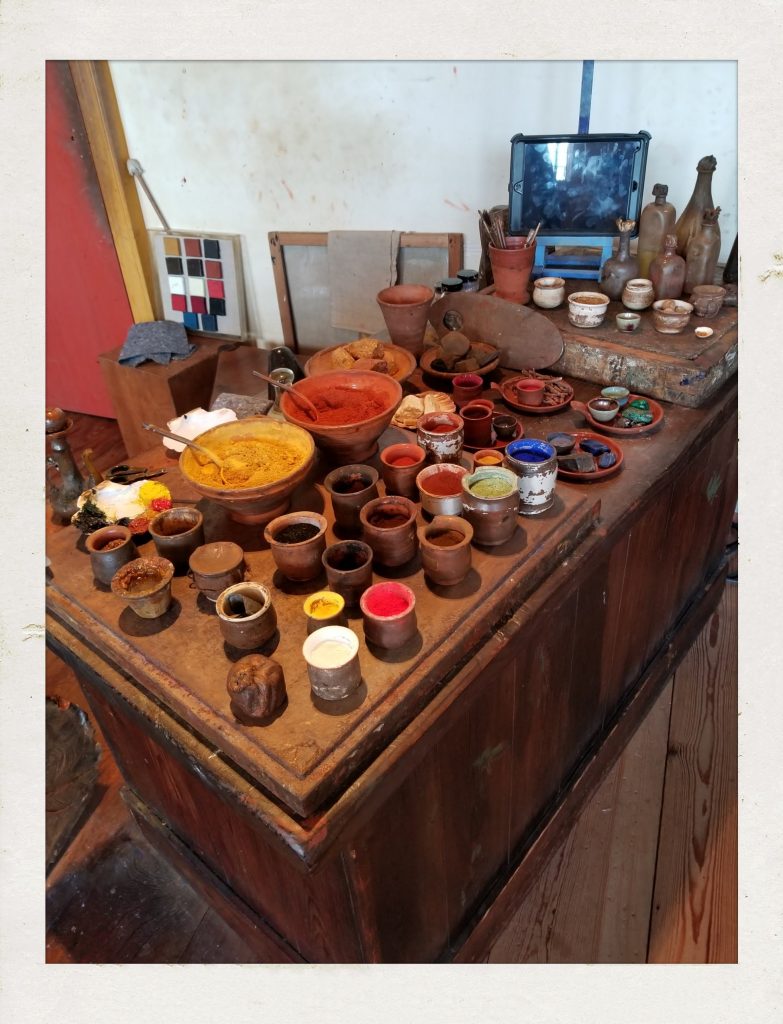
In the 17th century artists had to carefully mix their own paints, first grinding the colour pigments to a powder and then mixing them with various oils and solvents to create the colour and texture they needed. Canvas preparation was equally arduous.
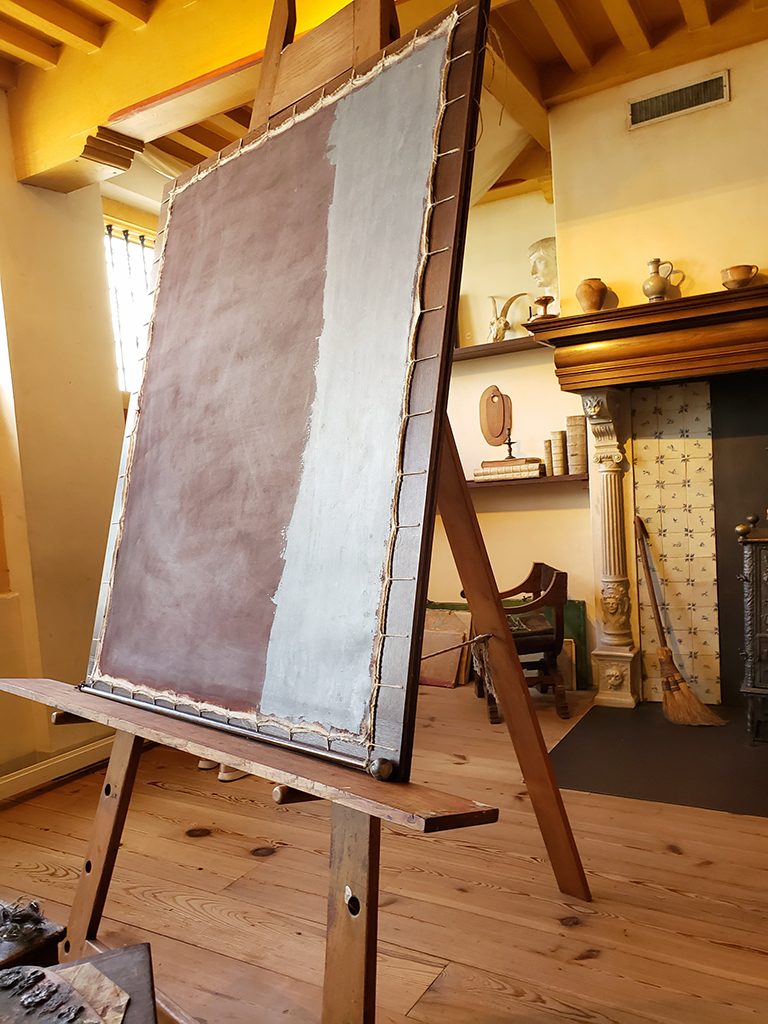
Like today, the kitchen was the heart of the house. This particular kitchen contains a small “box bed” built into one wall, which is where the maid slept. This was not an unusual hardship, however, as these sorts of beds were common at the time. There is another one in the house where Rembrandt himself slept, and several others for art-buying guests who needed to stay overnight.
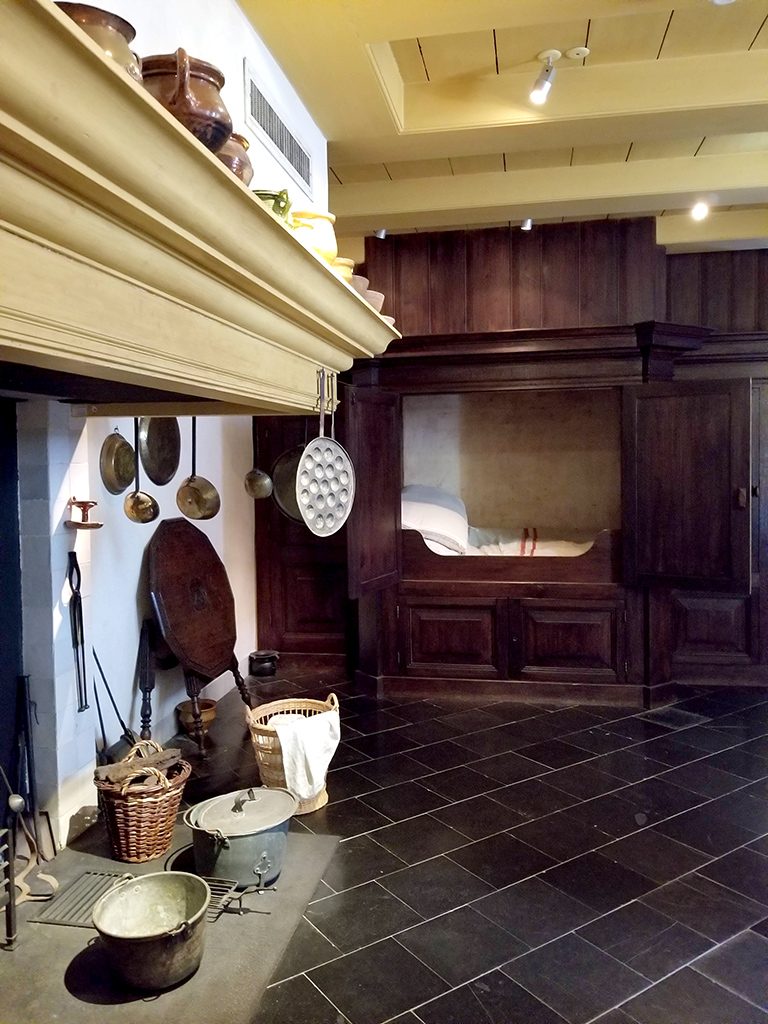
The beds were boxed for warmth, and so they they could be closed away during the day. They were also much shorter than modern beds because people at the time slept in a semi-seated position, fearing that laying flat would lead to respiratory illness.
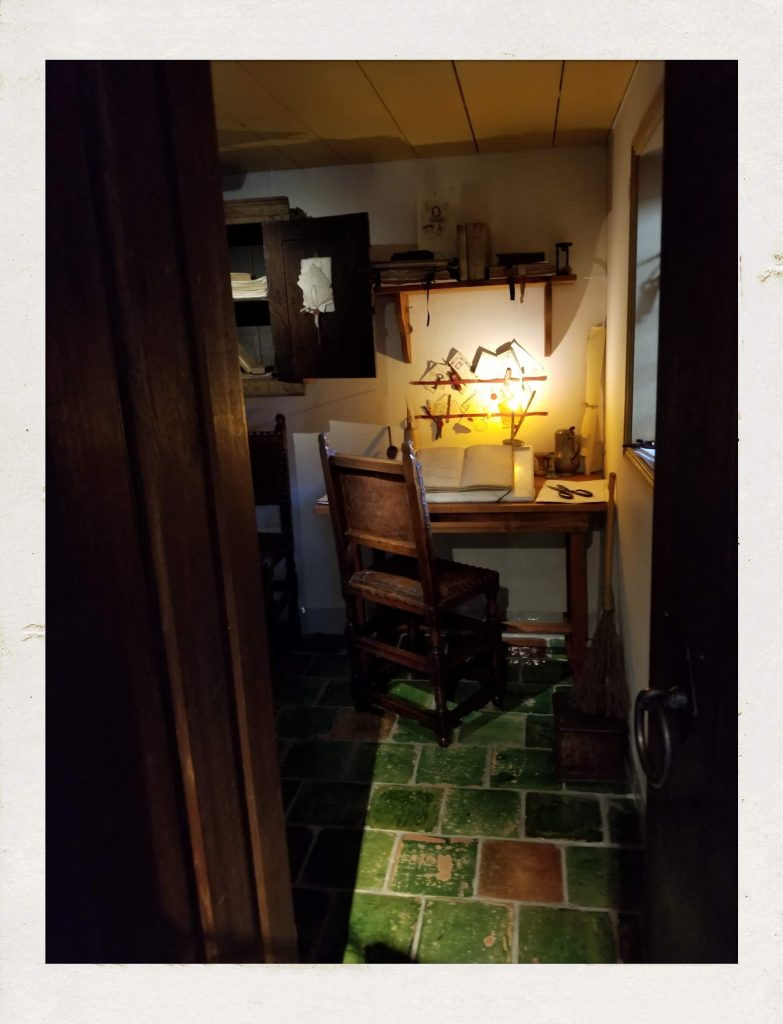
There was also a small office where Rembrandt took care of paperwork, invoicing, and all the other boring tasks that continue to annoy self-employed peoples to this day. Nearby, a view out one small window revealed a courtyard surrounded by tiled roofs.
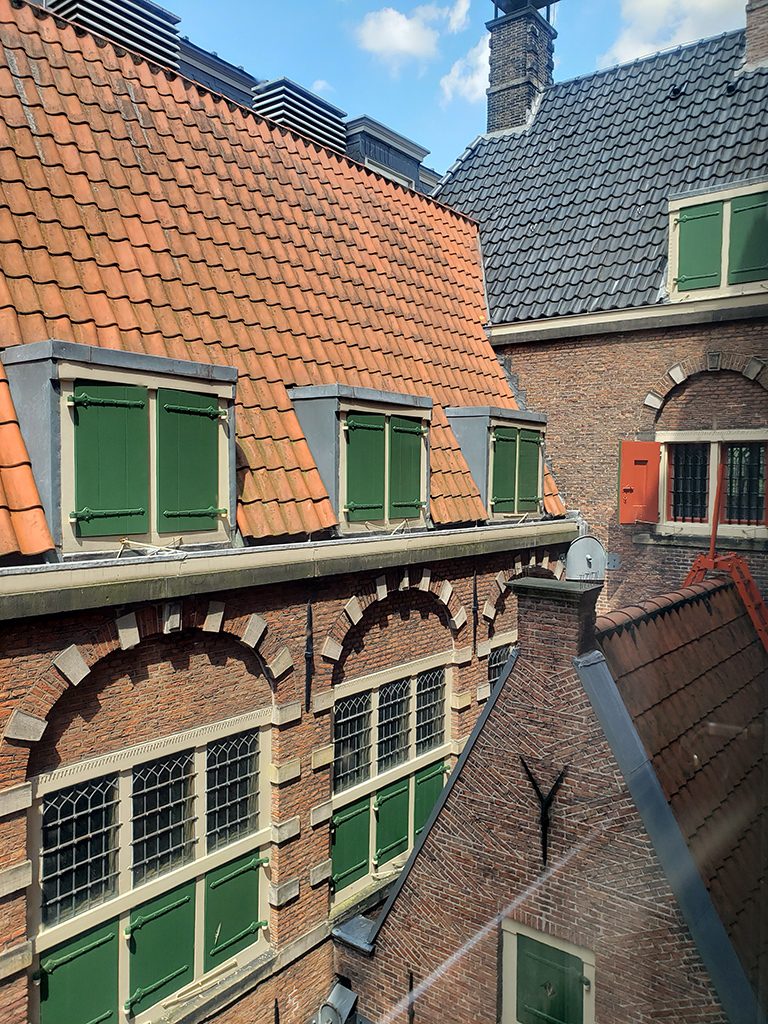
Another room displayed items representative of Rembrandt’s personal collection of natural and human-made artifacts. These were items that he used as inspiration and reference when doing his art. In addition to casts of Roman and Greek busts (which he and his students used to practice drawing people) there were also enormous turtle shells, coconuts, stuffed alligators, puffer fish, various weapons, and other similar objects. A pile of enormous books contained reproductions of classic artworks he and his students could learn from them.
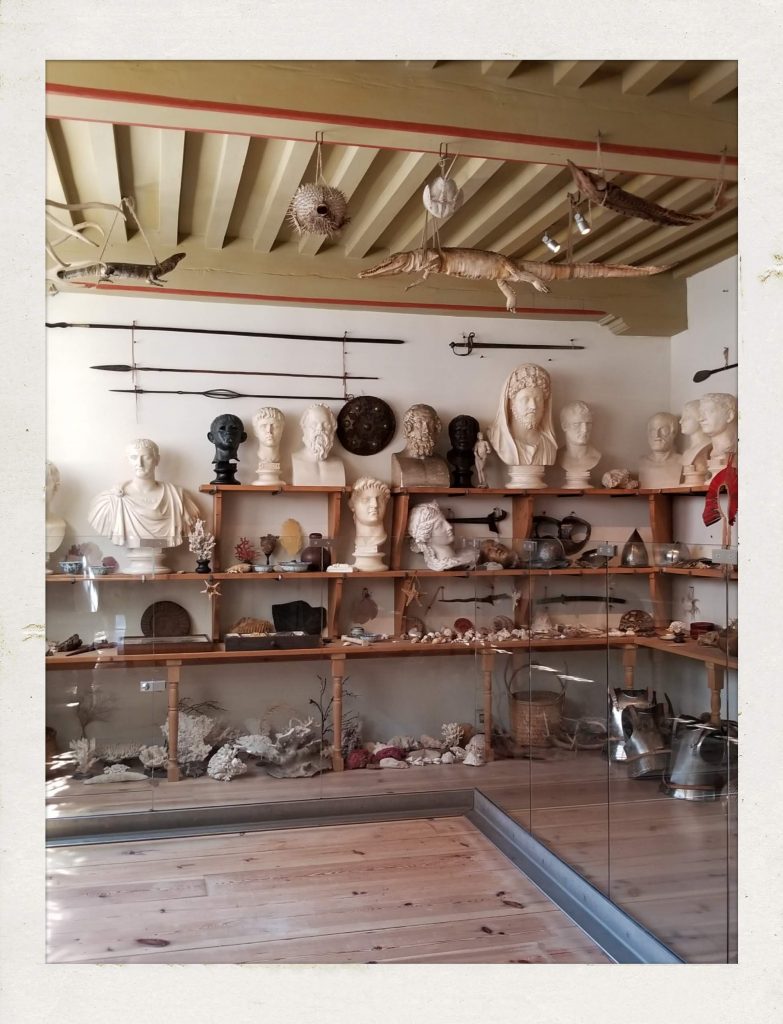
On the uppermost floor of the house was the Small Studio, a room divided into multiple cubicles where Rembrandt’s students could practice their painting skills under their master’s direction.
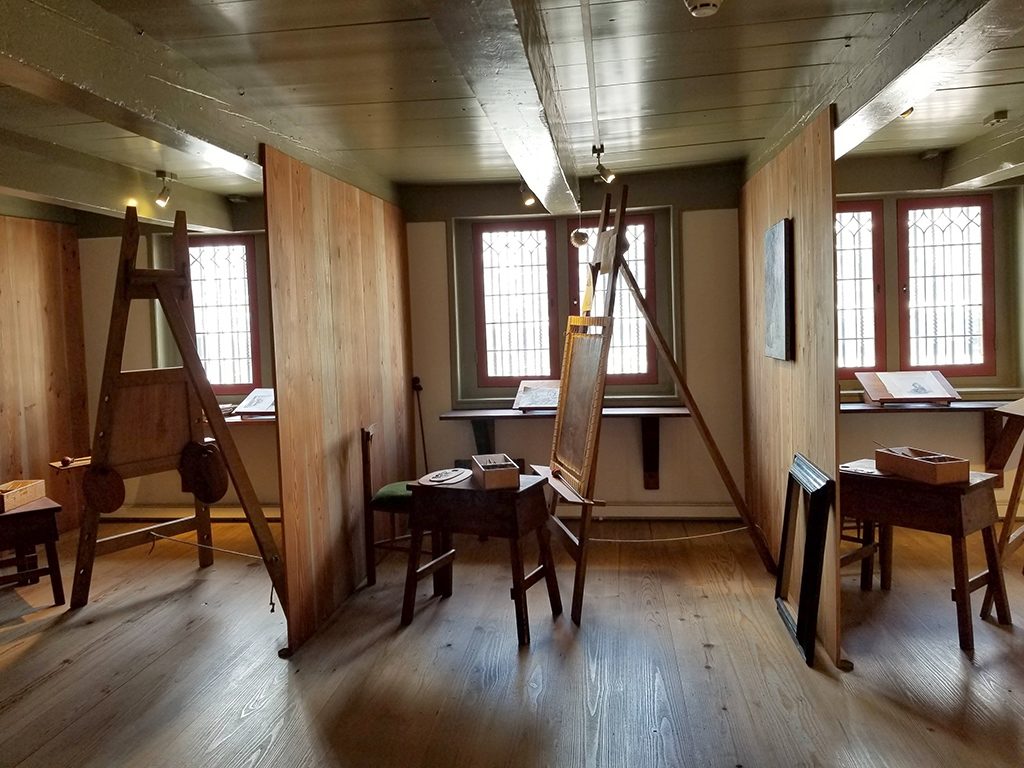
Directly across the street from the Rembrandt House we enjoyed drinks on the patio of Café de Sluyswacht, a tiny building constructed in 1695 as a home for the “sluice master” who opened and closed the gate that controlled the flow of water in the adjoining canal.
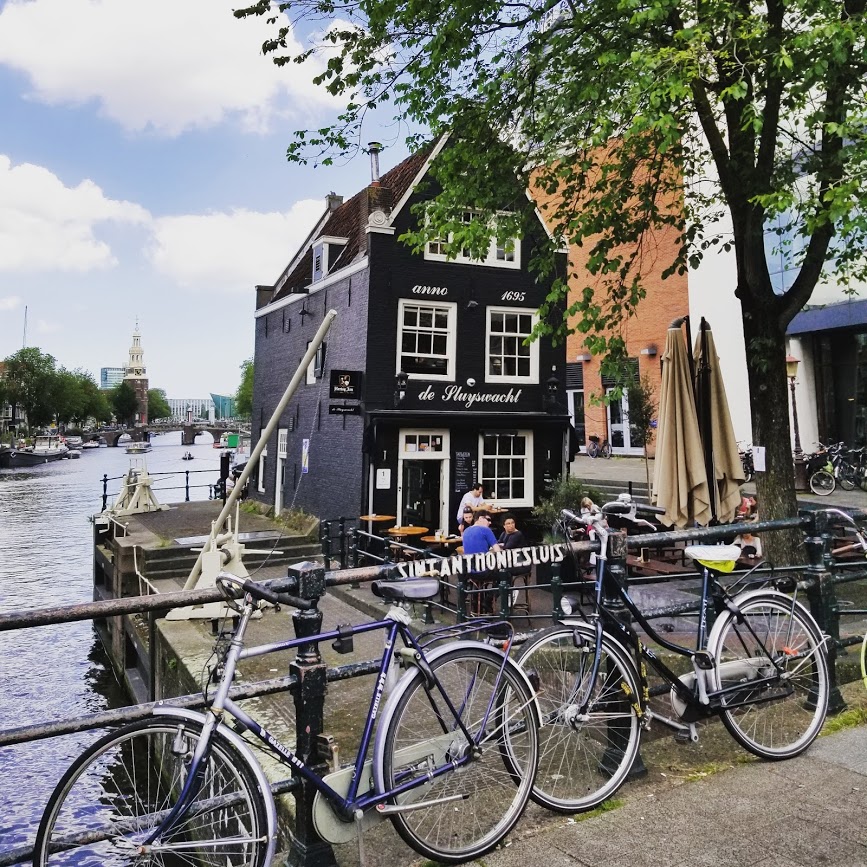
The building predates Rembrandt, but while living across the street in the 1640s he was inspired to do a sketch of the sluice mechanisms themselves
